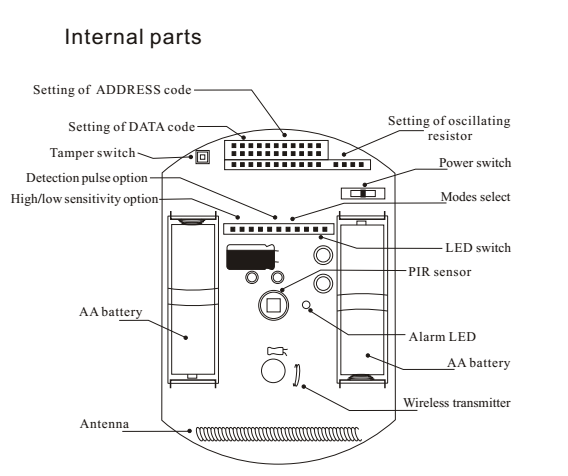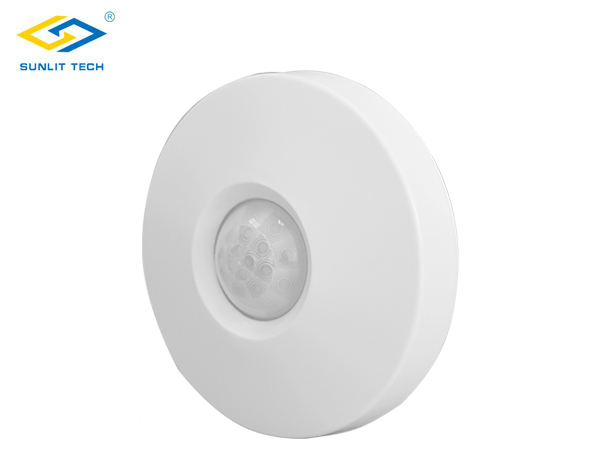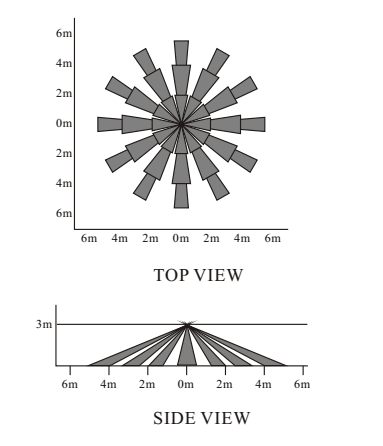How Does A Passive Infrared Detector Work?
I wonder if you have ever encountered this situation in your daily life. When you walk into some dark corridors or hallways at night, sometimes the lights will light up automatically, and sometimes you need to cough heavily or stamp your feet before the lights will light up. This situation is determined by the different sensor choices of the corridor lights, but in general, the voice-activated sensors triggered by sound are slightly inferior to the automatic sensing infrared sensors.
What is PIR technology? If we only talk about PIR itself, in the field of chemistry, it refers to polyisocyanurate foam; in the field of biology, it is a database that integrates public resources on protein function prediction data, and its purpose is to support genome/proteome research; in the security industry, it is the abbreviation of Passive Infrared, that is, passive infrared technology. The full name of PIR detector is Passive Infrared Detector, that is, passive infrared detector or body sensor, sometimes called Passive Infrared Sensor, and detectors in the security industry are mostly called Detector.As we all know, at room temperature, any object has radiation, and humans, as warm-blooded animals, have the most stable infrared radiation. The reason why we call PIR detectors passive infrared detectors is that the detectors themselves do not emit any energy but only passively receive and detect infrared radiation from the environment. After the detector is installed, it will adapt to the environment for a few seconds. When no one or animals enter the detection area, the infrared radiation on the scene is stable. Once the infrared radiation from the human body comes in, the optical system focuses the pyroelectric device to generate a sudden electrical signal, and then conduct subsequent linkage.



1. What should be paid attention to when applying PIR technology?
First of all, it should be noted that infrared light has poor penetration. There should be no tall objects in the prevention area, otherwise the shadow part will not be able to alarm if someone walks. Do not face heat sources and strong light sources, especially air conditioners and heaters, otherwise the constantly changing hot air flow will cause false alarms. Secondly, since the passive infrared detector is a weak signal detection device, some details must be paid attention to during installation, such as height, sensitivity, etc. At the same time, it should be noted that it should not face glass doors and windows. There will be two problems when the passive infrared detector faces glass doors and windows. One is white light interference. Although PIR sensor has a strong suppression function for white light, it is not 100% suppression after all. Therefore, avoid facing glass doors and windows to avoid interference from strong light. Second, avoid complex environmental interference outside doors and windows, such as crowd flow, vehicles, etc. Finally, it is also necessary to pay attention to not facing hot and cold vents or hot and cold sources. The sensing effect of passive infrared detectors is closely related to temperature changes. Hot and cold vents and hot and cold sources may cause false alarms of detectors. For some low-performance detectors, air convection through doors and windows may also cause false alarms.
2. What applications of PIR technology have been implemented?
At present, in addition to the induction lights commonly seen in corridors, PIR human infrared sensing is mostly used for perimeter alarms. Passive infrared detectors (PIR) can be roughly divided into single-beam and multi-beam types according to their different structures, warning ranges and detection distances. Single-beam PIR uses a reflective focusing optical system, which uses a curved reflector to focus the infrared radiation from the target on the infrared sensor. The field of view of this type of detector is narrow, generally below 5°, but the effective distance is far, up to 100 meters. Therefore, it is also called a linear long-distance controlled passive infrared detector, which is suitable for protecting narrow corridors, passages, and blocking doors, windows, and walls.
The multi-beam type uses a lens focusing optical system, and most of them use infrared plastic lenses-Fresnel lenses with multi-layer beam structures. This lens is made of polyolefin plastic in one molding, and several small lenses are arranged on an arc surface. The warning range is in multiple single-beam states in different directions, forming a three-dimensional fan-shaped heat-sensitive area, which can form a three-dimensional warning. At the same time, because the warning field of view of the multi-beam PIR is much larger than that of the single-beam type, the horizontal field of view can be greater than 90°, and the vertical field of view can reach a maximum of 90°, but the working distance is closer. All lenses focus on the pyroelectric device set inside, so the sensitivity is high, and an alarm will be sounded as long as someone walks in the lens field of view.In addition to perimeter alarms, this technology has also been added to many home anti-theft devices. For example, after the technology is implanted, the EZVIZ video lock can realize 24-hour automatic sensing. When there is any abnormal movement at the door, it can capture and record in real time, and push abnormal messages to the user's mobile phone, 24-hour online protection, truly realizing active defense.
With the continuous upgrading of criminal methods, people's requirements for residential security technology prevention are getting higher and higher. Relying on traditional security measures can no longer meet people's safety needs, and passive infrared sensor human infrared sensing will turn passive into active, "super double" the safety of people's lives and property.
 简体中文
简体中文
